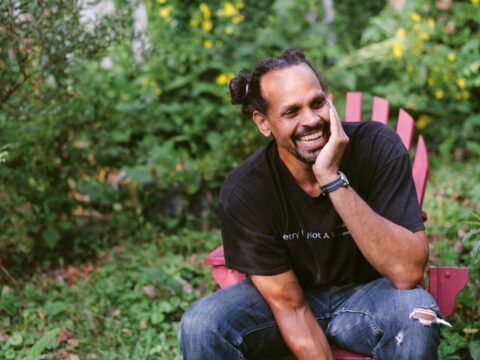The United Church’s massive restructuring project went live two years ago, and this past fall, Broadview’s retired senior writer, Mike Milne, with assistance from Broadview’s current senior writer, Glynis Ratcliffe, probed the various facets of the overhaul. Their aim was to check in on the project’s progress and to find out whether church members are satisfied with their revamped denomination.
Overall, the changes are getting mixed reviews. Some still question whether the restructuring was actually needed, while others urge, “Give it a chance; they’re still working out the kinks.” Whether the shift will help the church survive or thrive in the long term remains to be seen.
Intended to create a less costly and more nimble organization, the new governance model replaced 88 Presbyteries and 13 Conferences with 16 Regions, while leaving local communities of faith and the General Council, the overall governing body, intact. Its aim was also to ensure predictable governance and administration funding for the General Council and the Regions, and create a more easily adaptable church that needs fewer volunteers.
Although January 2019 marked the official start of the restructured church, the journey to make the changes began in 2013, with a two-year church-wide consultation. That led to a blueprint for the new structure, which was adopted in 2015 by the General Council that met in Corner Brook, N.L. Before the changes could be put into effect, they were approved in a series of church-wide votes, called remits, with final sign-off occurring in July 2018 at the General Council meeting in Oshawa, Ont.
More on Broadview…
- Catholic schools can be harmful for LGBTQ2 youth. Should we defund them?
- Michael Blair on where the United Church should go from here
- Christianity has no patience for my chronic ailments
Then, in March 2020, with less than 15 months under its belt, the reorganized church faced an unexpected test: the COVID-19 pandemic. Everyone scrambled to shift worship and meetings online, but the pandemic inspired some positive changes, too. It propelled the church to become much more digitally savvy and spurred quicker decision-making. It demonstrated that the leaner three-court church is faster to adapt than its four-court predecessor.
“COVID became a gift and helped move what we have started forward in a quick way,” says Rev. Michael Blair, General Council’s general secretary and former director of the Church in Mission unit. “It’s been a gift around this kind of nimbleness.”
Whether that nimbleness can carry the church’s transition through to the finish line isn’t yet clear. Broadview’s review of the denomination’s new financial model, the launch of its Office of Vocation, the establishment of a self-governing Indigenous church and the denomination’s efforts to foster a sense of community shows that while the church has made strides in many areas, the restructuring is still a work in progress.
A NEW FINANCIAL MODEL
In the past, Conferences or Presbyteries decided on a set amount of money to collect from their communities of faith each year. The governance and administration work done by the General Council, along with its grants to Conferences, was funded by voluntary donations to Mission & Service. Now, communities of faith give an assessment based on their income directly to the General Council, and a portion of the total funding is split evenly among the Regions. Increases in assessments were limited for three years to 10 percent of what was owed before restructuring, so communities of faith have had plenty of time to adjust to any future changes.
Since the 16 new Regions are more uniformly sized than previous Conferences, the equal sharing of the regional portion of assessment funding serves to level the financial playing field. Tiny former Manitou Conference, for example, perennially struggled with budgets. Now part of the larger Canadian Shield Region, it can afford its staff, governance and administration costs. At the same time, high assessments from wealthier congregations, like those in areas previously covered by Toronto Conference, help subsidize the work of Regions with lower-income congregations.
“I think there was a sense that there was going to be more Mission & Service money than there is.”
–Rev. Shannon McCarthy
Some Regions also have large pools of additional funding from endowments, bequests or related capital investment funds from their predecessor Presbyteries or Conferences. They’re in even better financial shape and have even more staff than the Conferences they replaced. Pacific Mountain Region, for example, is almost a restructured twin of British Columbia Conference and has a budget that includes well over $1 million in annual foundation and investment income.
Nakonha:ka Region, made up largely of former Quebec Presbytery, is also well-heeled. “The money business doesn’t seem to be a problem for us, because we managed on our own before,” says Fred Braman, the Region’s chair of finance. “In fact, we are getting more money from the national church than we were before.” He even describes each Region being given the same amount from the top as “a rather stupid idea” and says the Regions have vastly different needs.
There’s also the fact that assessments no longer go toward mission work. “Presbyteries funded a lot of ministries through their assessment [income],” says Rev. Shannon McCarthy, the executive minister of Living Skies Region, within the boundaries of former Saskatchewan Conference. “And now those are all funded through [Mission & Service] or not funded at all.” Regions have the option to collect additional assessment money directly from their communities of faith, so to keep those ministries alive Living Skies is collecting an additional 20 percent.
“I think there was a sense that there was going to be more Mission & Service money than there is,” says McCarthy, who also serves two other western Regions. “And I don’t think COVID is going to help that.”
Even though pastoral charges have done a good job of tapping available government emergency funds, the pandemic is putting financial pressure on church members, with many losing job income or watching their investments dwindle. They may give less to their churches, affecting the whole financial system. It could also mean a sharper fall in Mission & Service contributions this year, but that won’t become clear until the 2020 amount is finalized in a few months.
For now, says Rev. Cheryl-Ann Stadelbauer-Sampa, executive minister for three Ontario Regions, “it is important to remember the context that led to the remit that changed [the] funding [model].” The General Council’s reliance on annual Mission & Service donations — currently dropping by about $1 million a year — to fund governance and administration made annual budgeting difficult. Too often, reserve funds, made up of bequests to the United Church, were spent to cover annual General Council deficits instead of being set aside to provide long-term income.
Last summer, 12 General Council office staff, including the church’s head of philanthropy, were laid off and General Council grants were also reduced as part of $4 million in cuts to balance the 2021 budget. In recent history, the General Council has made these kinds of deep budget cuts once every three years.
But until the financial effects of the pandemic are clearer, head financial officer Erik Mathiesen says it’s “too early to tell” whether the next round of deep cuts can wait until 2023 — or will have to happen sooner. “Our past practice of doing a major cost reduction only once a triennium will certainly come under pressure,” he says.
LAUNCHING THE OFFICE OF VOCATION
Making sure communities of faith have trained and qualified ministers well- suited for their local needs is arguably one of the United Church’s most important roles.
The restructure changed where this happens. Human resource professionals in the Regions are now in charge of pastoral relations, and work with volunteer liaisons to communities of faith. A new centralized body — the Office of Vocation (OV) — controls the admission, education, credentialing, oversight and discipline of ministers. The OV, governed by an elected Board of Vocation, also manages Church Hub, an online portal that, for example, allows congregations to submit documents to the General Council office, and connects ministers searching for calls with communities of faith seeking pastors.
The OV does its work with about 10 percent of the volunteers formerly needed in Presbyteries. Seven candidacy boards have replaced 84 education and students committees, and most are meeting monthly. In the Atlantic region alone, about 60 candidates for ministry are lined up. As well, a single central admissions board handles work previously carried out by 13 Conference-based committees. Diaconal minister Marlene Britton, OV program co-ordinator for admissions and pastoral relations, says the new board is “very diverse culturally…and working better.”
While still seeking more volunteers to support its work, the OV plans to recruit for the diversity and skill sets it wants. OV co-ordinator and team leader Rev. Jenny Stephens understands why some volunteers may be holding back.
“I think it’s sometimes hard for people to volunteer for things when they don’t fully understand what it is,” she says. She also cites “teething problems” with Church Hub, but says a staff person is available to coach less tech-savvy church folks.
As with before the restructuring, the hardest ministry vacancies to fill are those that are rural and part-time. Communities of faith relying on licensed lay worship leaders or student ministers also need qualified supervising ministers, who are in short supply.
Oversight and discipline of ministers, often problematic for Presbyteries, has gone smoother so far, according to OV staff. The most serious cases, previously heard by Presbytery or Conference committees, are now decided by the elected Board of Vocation. Most cases, though, are “response and remedial” matters, and handled without a formal hearing.
In the cases he’s been involved with, says Atlantic region OV minister Rev. Andrew Richardson, the subjects “appreciate the clarity of the process and the fairness and caring that is built in. They may not be happy with the result, but they aren’t angry at the church.”
ESTABLISHING THE SELF-GOVERNING INDIGENOUS CHURCH
At General Council in 2018, the Caretakers of Our Indigenous Circle brought forward a list of calls to the church. “We will decide for ourselves who we are,” the group wrote. “Colonialism took community control away from us and placed it in a colonial center of authority. Recovery from colonialism is our path moving forward.” Commissioners accepted the document, opening the door for the Indigenous parts of the church to have self-determination and self-governance, while continuing to walk alongside and be supported by the broader church.
“I think the biggest question for us all is, ‘What is our way?’”
-Rev. Murray Pruden
Instead of being folded into the 16 new Regions, Indigenous church members established their new structure in August 2019 at a National Indigenous Spiritual Gathering in Rama, Ont. They formed an eight-member National Indigenous Council (NIC) to lead a national organization, as well as a 16-member Elders council — teachers and knowledge keepers who will advise the church. The national organization will select 15 General Council commissioners and one member of both the General Council Executive and the Board of Vocation. (The Office of Vocation also has an Indigenous office and an Indigenous candidacy board.)
At the August 2019 gathering, delegates considered creating a distinct Indigenous Region, but no consensus was reached. Instead, a General Council recall meeting in October 2019 passed a motion to make the National Indigenous Organization a body equivalent to a regional council, with the same powers and responsibilities. The motion stated that Indigenous communities of faith can also choose to create a covenant with the regional council in their area, in addition to being part of the National Indigenous Organization.
Rev. Murray Pruden, General Council’s executive minister for Indigenous ministries and justice, likens the NIC to an infant, given that it’s been just over a year since its formation. “I think the biggest question for us all is, ‘What is our way?’” he says. “We need to answer that for ourselves, and then relay that to our relationship to the church, to the Regions, to national. We need that incubation time.”
Overall, while Indigenous church members express feelings of hope for the intentions of the settler church, that hope is mixed with frustration. Without the community, support and shared identity of the former All Native Circle Conference and Indigenous Presbyteries, some in the Indigenous church felt rushed and inadequately supported as their leaders sought to create policies and a governance structure.
Tonya Antone, a member of the NIC from Oneida Nation of the Thames in southwestern Ontario, talks about the hurt feelings in her own congregation when restructuring began. “[There was] that feeling of being displaced,” she says. “The feeling of being, just for a lack of a better description, put in the corner again, and put ‘over there.’”
Rev. John Thompson, the only non-Indigenous member of the NIC, echoes Antone’s feeling. “I don’t think the Indigenous communities really realized the — I want to use the word ‘devastating’ — impact that the structural change would have on Indigenous ministries in Canada.” He says that in the former Keewatin Presbytery, which included communities in Manitoba and northern Ontario, Indigenous church members already enjoyed a high level of self-governance and that the revamp pulled the rug out from under them, leaving them with no real way to connect as the NIC was being formed.
Thompson’s spouse, Elenor Thompson, is a member of the Bunibonibee Cree Nation and the National Elders Council. She adds that forming a national organization representing the many different First Nations’ traditions is as challenging as “that biblical story where they build the tower of Babel —this concept of building a big tower, and they all speak different languages.”
What remains now is figuring out how the Indigenous church and the national church can work together to continue the healing process, without a colonial framing. “I don’t expect the church to solve our problems,” says Elenor Thompson, “but I expect the church to walk with us in solving our problems.”
FOSTERING A SENSE OF COMMUNITY
Presbyteries often stumbled in their handling of ministry oversight and discipline, relied heavily on volunteers for pastoral relations work, and survived a restructuring attempt that might have eliminated them about two decades ago. Through it all, though, Presbyteries remained places where ministers and dedicated volunteers met regularly, shared their work and faith, and supported each other.
“In the old days, everybody complained about Presbytery,” says the Office of Vocation’s Jenny Stephens. “Now everybody misses it.”
Many say Presbyteries’ less tangible role in providing mutual accountability and collegiality has not yet been replaced by nascent networks and clusters. In some Regions, though, the pandemic has hastened the move to online connections. Between town hall Zoom meetings and ministers’ learning circles, says Treena Duncan, executive minister for Pacific Mountain and Chinook Winds Regions, “people are saying they are feeling more connected than they did before.”
Regions across the church are also struggling with a volunteer shortage — a sign, perhaps, that church members aren’t yet feeling a strong connection to their local Region. Rev. Faith March-MacCuish, executive minister for the three Atlantic Regions, reported to her Regions’ annual meetings that some volunteers “were not wanting, and therefore not ready, for the change.…Some need to take some time to grieve what they have lost, and others are taking time to see how it is working before they offer themselves.”
As the United Church approaches its 100th birthday in 2025, it can also look back on the many changes it has already weathered. With that perspective, two years in the church is not very long at all.
“We’re not done this transition in any stretch,” says Shannon McCarthy. “We have to keep reminding ourselves of that. We don’t have to have it perfect right away — we can keep adjusting and evaluating how things are going.”
This article first appeared in Broadview’s January/February 2021 issue with the title “Restructuring revisited: How well is the new United Church working?”
***
With files from Glynis Ratcliffe.
Mike Milne is a writer living in Owen Sound, Ont.
















John 6:66-69 – Jesus never worried about the numbers in His congregation.
Jesus was not financially well off, almost everything he used in His ministry was borrowed. Luke 8:2-3 showed He lived off of His followers income.
His organization was the pits – 12 disciples a hand full of women, and who ever decided to follow Him. This in spite of having great organizational skills. The feeding of 5000 is recorded in all four gospels.
He started with the focus of one nation, when they rejected Him He focused on everyone else. He didn’t move to another race leaving the others on their own.
What is the United Church using as an evaluation point?
If it is lost souls, everything else won’t matter.
The United Church is starting to sound more and more like a corporation and less and less like a Church.
You are right. And they have the same corporate agenda. Divide people with identity politics instead of uniting them in Christ.
Presbyteries were eliminated in Newfoundland and Labrador during the “restructuring attempt that might have eliminated them about two decades ago” and at that time volunteer positions that had been filled were eliminated or the committees moved to areas at great distances from the volunteers local communities. And some of these former volunteers are not taking “some time to grieve what they have lost” they are fed up with the disrespect and lack of consultation shown them and will not be volunteering ever again. I know because I am one of them.
I would like to see some fresh thinking and options for restructuring the deed of trust. Is it really fair in this day that congregations pay their own ministers, pay an assessment that support the expenses of Regional and National staff, and pay all the capital maintenance and operational costs (including huge annual insurance premiums) on buildings that don’t actually own but for generations have paid for? Fresh thinking here required on ways of financial burden sharing to keep local congregations alive.
Stopped reading when I read….”Covid became a gift”.
The general council is very busy dismantling the United Church of Canada. The placement of ministers masking as Christians and us funding social justice activists, who call congregants racist and privileged but expect us to finance liberation theology and pay reparations for the African descendants. The feverish activity to pronounce us as an anti-racist denomination when we have been a Protestant denomination for over 500 years. The anti-racist strategy is code for anti-white, which is not Christ centered and is a separation from God, which is a sin.
You are correct. thank you for pushing back